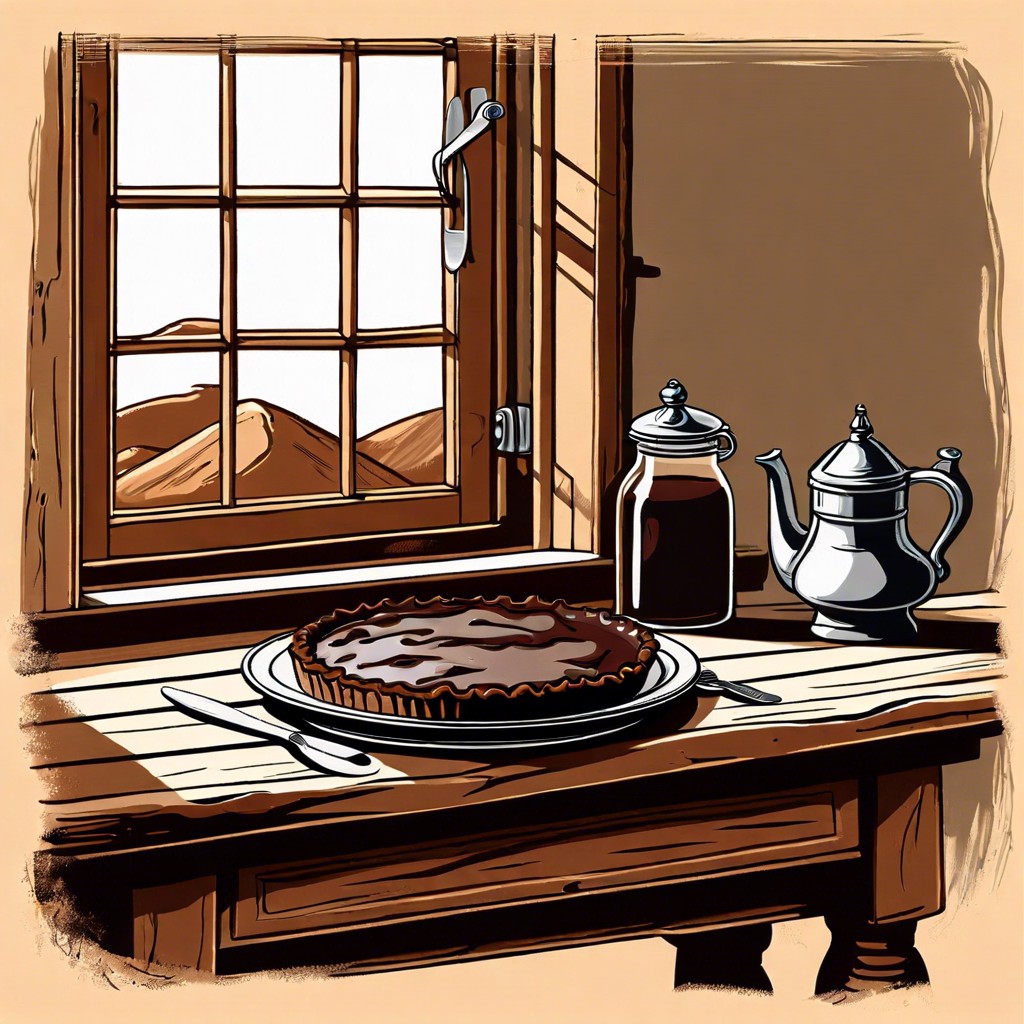Learn how to create a delicious chocolate pie, including tips on selecting the right ingredients and perfecting the filling.
Key takeaways:
- Chocolate pie has a rich history dating back to ancient civilizations.
- Popular variations include French Silk, Chocolate Pecan, No-Bake, and Chocolate Cream.
- Consider the nutritional information when enjoying chocolate pie.
- Tips for a perfect crust include cold ingredients, careful mixing, blind baking, and resting the dough.
- Top your chocolate pie with whipped cream, fresh berries, caramel, or nuts for added deliciousness.
Inside
History of Chocolate Pie

Chocolate pie’s journey begins with the ancient civilizations of the Americas, where the cocoa bean was first revered and consumed as a drink. As cocoa spread to Europe in the 16th century, it was initially used in beverages. By the 19th century, transformed into solid form, chocolate found its way into pies and tarts, evolving into the decadent dessert known today.
In the United States, chocolate pie became a staple, especially in the South, where it was paired with a simple, flaky crust and sometimes a meringue topping. Over time, regional variations began to appear, incorporating everything from nuts and caramel to marshmallows. This dessert has been a beloved treat at family gatherings and community events, symbolizing comfort and indulgence. Through these social traditions, chocolate pie cemented its place in culinary history as a simple yet profound representation of communal joy and sweetness.
Popular Variations of Chocolate Pie Recipes
Chocolate pies can vary widely depending on the ingredients and preparation methods used. One popular variation is the classic French Silk Pie, which boasts a buttery crust and a smooth chocolate filling enriched with eggs and finely whipped cream. Another favorite is the Chocolate Pecan Pie, where a traditional pecan pie gets a rich twist with the addition of melted chocolate, appealing to both nut and chocolate lovers.
For those who prefer a cooler treat, the No-Bake Chocolate Pie is a go-to. This version often involves a simple cookie crust filled with a chilled chocolate mousse or pudding, perfect for hot days when turning on the oven is less appealing. Then there’s the Chocolate Cream Pie, which features a custard-like chocolate filling topped with a layer of fluffy whipped cream, often garnished with chocolate shavings or curls for an extra touch of indulgence.
Lastly, adventurous bakers might explore adding unique spices like cinnamon or chili to their chocolate pies, creating a surprising flavor profile that tickles the palate differently than traditional versions. Each of these variations shows the versatility of chocolate pie, easily adaptable to suit different tastes and occasions.
Nutritional Information
Chocolate pies, while delectable, are often high in calories and sugars, largely due to the crust and creamy fillings. A typical slice contains roughly 300 to 500 calories. For those watching their sugar intake, it’s smart to consider the type of chocolate used; dark chocolate contains less sugar than milk chocolate. In regards to nutrition, adding a swirl of dark chocolate can offer a dose of antioxidants known as flavonoids, which are linked to heart health.
For anyone seeking a healthier version, swapping out traditional ingredients for alternatives like almond flour or a sugar substitute can cut down on both carb and sugar content. This adaptation makes it a friendlier option for those managing dietary restrictions without sacrificing the joy of a good slice of chocolate pie.
Tips for Making a Perfect Chocolate Pie Crust
Achieving a flaky, buttery crust sets the foundation for your decadent chocolate pie. Here are a few pointers to guide you:
Starting with cold ingredients is key. Ensure your butter and even your mixing bowl are chilled before you begin. This prevents the fat from melting too early in the process, which is crucial for a flaky texture.
Consider the mixing method. Overworking the dough can lead to tough pastry. Mix until the dough just comes together; visible butter specks are a good sign.
For blind baking, a necessary step to prevent soggy bottoms, use pie weights or dried beans to keep the crust’s shape intact. This method involves partially or fully baking the crust before adding the filling, ensuring crispiness.
Lastly, rest the dough before and after rolling it out. This relaxes the gluten and makes it easier to handle, while also helping to maintain its shape during baking. Cooling it in the fridge after rolling and before filling can really make a difference.
Most Loved Chocolate Pie Toppings and Their Pairings
Whipped cream provides a light, airy contrast to the rich chocolate filling, enhancing each bite with a smooth finish. Fresh berries, such as raspberries or strawberries, add a tart balance, making the flavors pop while giving the dish a visually appealing look. For those who crave extra decadence, a drizzle of caramel or a sprinkle of sea salt can elevate the pie, creating a delightful blend of sweet and salty. Lastly, nuts like toasted pecans or almonds offer a crunchy texture that complements the creamy chocolate. Each topping brings its own flavor and texture to the table, allowing for customized indulgence.




